You can fight progress all you want. You can stick your head in the sand or you can protest, but the simple fact is… AI is here and it is good. As good as most of your people – especially at entry level.
I’ve been playing around with generative AI tools like Midjourney for a couple of years now. In the beginning it was playing, but now it is very serious. Leaving aside IP and copyright issues for just a moment, the ability to create fit-for-purpose imagery in minutes for use on a website or in a document, or even a video-conference background is very disruptive – especially to those whose income came from the generation of relatively generic images, including stock photography.
Where Are We At?
Here is a Case Study using a photograph that I own, and I have sold through Wirestock and Getty.
First. I tried to generate what I wanted using a text prompt while trying to remember the image. The prompt looked like this…
A photo of the ancient temple at Corinth, show two sides of the temple. Through the pillars in the background there is snow on the distant mountains. —ar 16:9
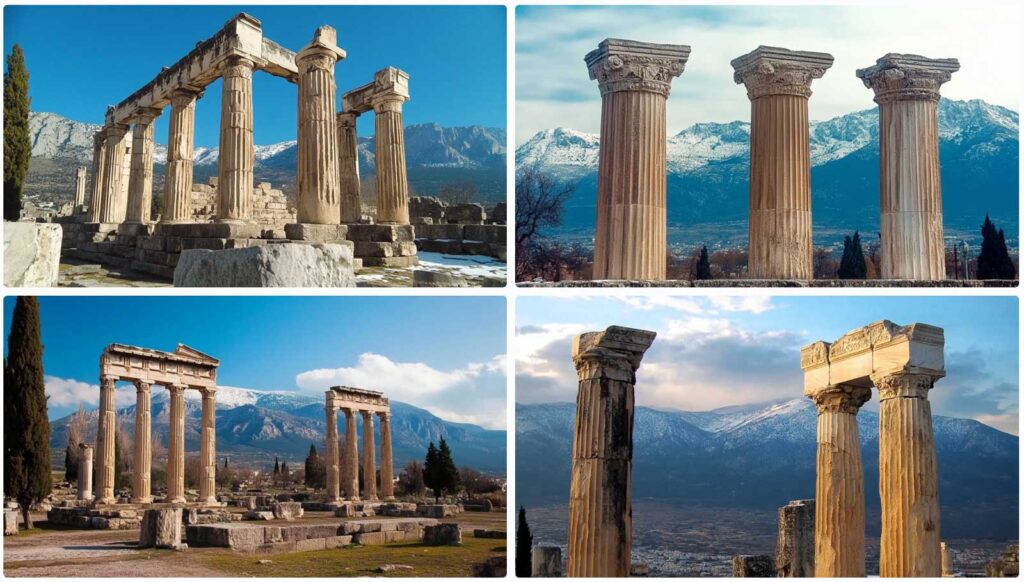
It’s not bad. If you had never been to ancient Corinth in Greece you could believe that this is what it looks like. Of course it doesn’t. This is where the AI trade-off comes into being. I could do variations of these images and iterate to try and get what I want. This might take hours and still might not get what I want, but there is another way which is a bit more of an ethical challenge.
Midjourney has a function called /describe – It does what it says on the tin. You upload a photo, or if you are in a stealing mood, you paste a link to a photo on the internet and ask the AI to ‘describe’ what it sees. I used a photo that I own – I left the watermark on for a reason that you will see later.
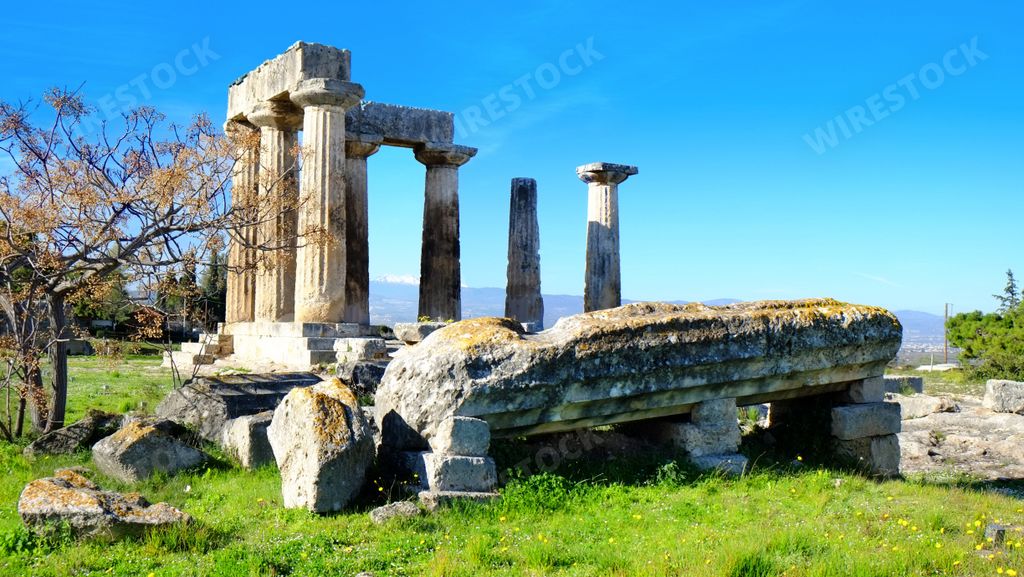
Here are the prompts that Midjourney came up with. This is what the AI thinks it sees.
- Photograph of a Corinthian temple in Greece. In the background, there is a clear blue sky. On the ground, there are some broken stones and grass. This is a stock photo, taken on a sunny day. –ar 16:9
- Photo of ruins at the temple complex in Frantheya, Greece with stone pillars and green grass on a blue sky background. “Waugenstock” in the style of [unknown artist]. –ar 16:9
- Photograph of the ancient Greek temple in Corinth, with several broken columns and rocks around it, a clear blue sky, and a green grassy ground. High-resolution photography, high-quality photo, high definition. –ar 16:9
- Photo of the ancient Greek temple in Corinth, with some broken pillars and ruins, against a blue sky, on a green grass background. “Widgetic stock” is written in the bottom right corner. Captured with a Canon EOS R5 camera and a wide-angle lens on a sunny day. –ar 16:9
Note that the AI knows that it is a stock photograph. Running all 4 prompts generates 16 images. Prompt number 1 produced the best results.
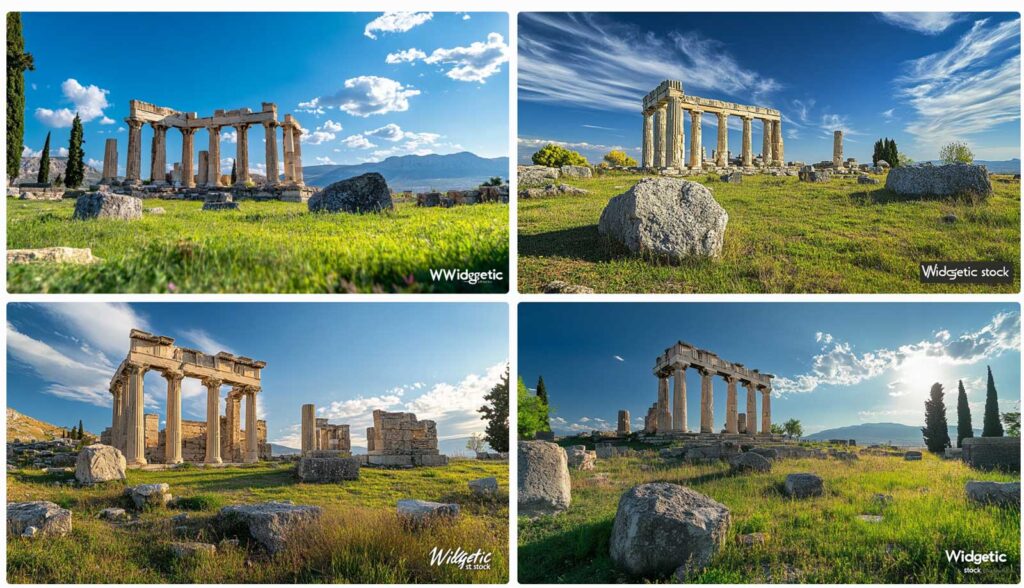
Honestly, if I had taken any of these shots I would be pretty happy with myself. The light is better, but there are obvious ‘errors’. The orientation of the temple is wrong. The image on the bottom right is the closest. Note also that the results include a stock tag (which can be cloned or cropped out pretty easily).
There is a setting in Midjourney that controls how much leeway the AI has when interpreting or copying an image. Again. There are trade offs to be made. Do you pass one of these images off as a photo of the temple at Corinth? Do you keep iterating until you get something that is ‘accurate’? Or do you just buy the image rights for the original photo in a stock library?
The more times the AI has seen an image or a thing, the better it is at generating an accurate representation. Try it with a specific car make and model! Since many of these models were trained using stock photos, that for SEO purposes describe the image, the AIs can replicate a specific stock photo quite well. e.g. Woman using a laptop.
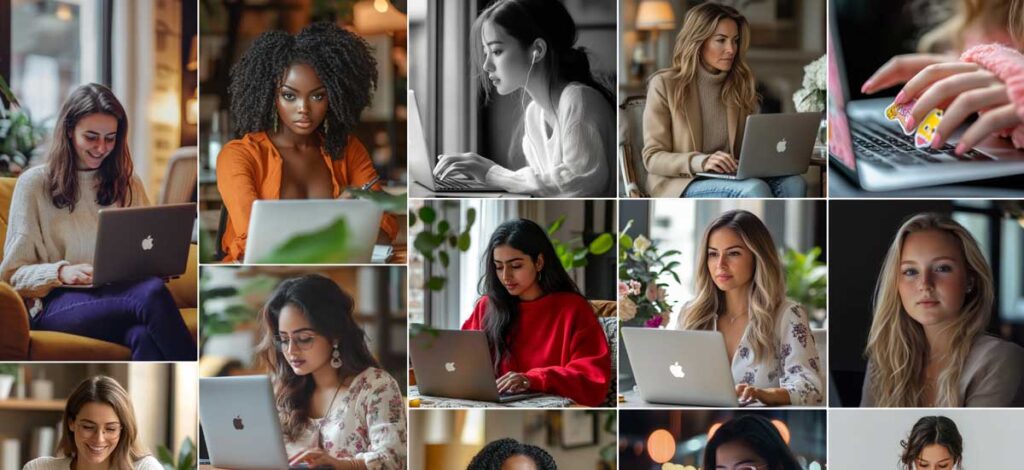
So if your image doesn’t have to be 100% accurate or truthful, AI offers a much quicker (and cheaper) range of options to choose from.
AI can also be quite good for generating images for more ethereal concepts like ‘Success’ or ‘Performance’. Most stock photography is quite literal, but AI allows you to mix things up a bit. Check out the images on Christina Ioannidis’ substack page.
So. Generative AI is here and it’s probably here to stay. In some cases, where authenticity and accuracy are important, images might have to be created the old fashioned way – though if you add ‘taken with an iphone’ to a prompt you get some really interesting results. If you just need something stock, that isn’t stock because you are using the same style each time or your own personal AI design signature, it might save you a lot of time and money and fuel your creativity too.


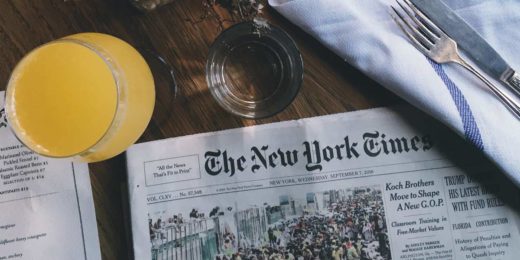
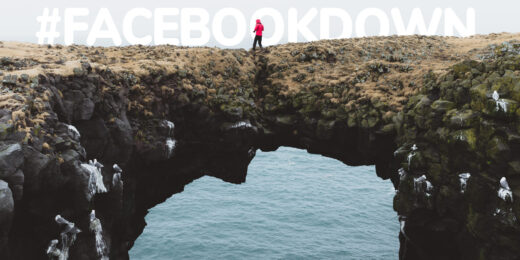
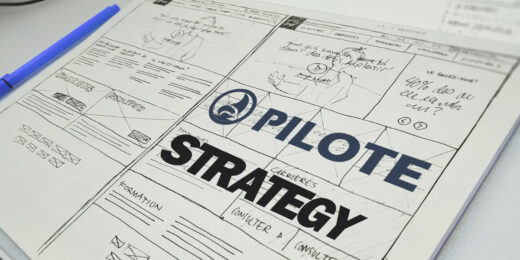
No Comments